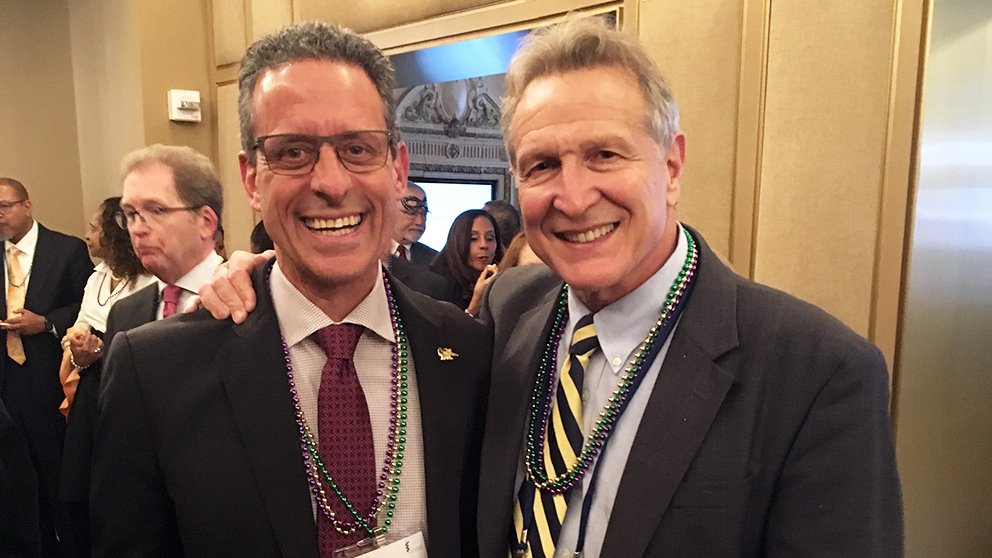
Michael Stamos, MD, dean of the University of California, Irvine, School of Medicine, did not have your typical high school experience. Three days a week after classes at Southwest Miami Senior High School, he was in the lab conducting experiments and analyzing data.
“I was looking at immune responses in guinea pigs,” Stamos recalls. “I was very independent. I met with a supervisor once a week to talk about progress, but aside from that, I was mostly on my own.”
Stamos was part of the Miami-Dade County Laboratory Research Program, designed to introduce high school students from the Miami-Dade school system to biomedical research. The program, which based Stamos at the VA Hospital in Miami, allowed students to serve as research assistants in one of the local labs, giving them a hands-on experience that they wouldn’t have been able to get in school.
Just three years earlier, another future medical school dean – also a student at Southwest Miami Senior High School – took part in the very same research program and was based at the same VA Hospital in Miami.
Robert Sackstein, MD, now dean of the Florida International University Herbert Wertheim College of Medicine, worked on a project that eventually led to the development of a new class of blood pressure medication – ACE inhibitors.
“What that program allowed students to do is enter labs for course credit in their junior and senior years of high school,” Sackstein says. “Almost every student interested in science would be eligible depending on their grades in biology and chemistry.”
“Dr. Stamos and I were each raised in a highly diverse community and we are both firmly committed to inclusiveness in medicine.”
Robert Sackstein, MD
Florida International University Herbert Wertheim College of Medicine
Independent study was a rare commodity in the Miami-Dade school system in those days. The high school had twice as many students as it could accommodate, which meant students went to school either from 7 a.m. to noon or from 12:30 to 5:30 p.m. Both Stamos and Sackstein had around 1,000 students each in their graduating classes.
“Southwest Miami Senior High School was not known for academic prowess,” Sackstein says. “However, that school, and, more importantly, the Miami neighborhood in which we lived was, and still is, a place where young people learn the value of hard work and accountability.”
Unfortunately, the research program no longer exists, but Stamos and Sackstein – who reconnected and discovered their shared history during the AAMC Council of Deans meeting in New Orleans in April – have pledged to get it back up and running. They also plan to meet with underprivileged students from the high school to encourage them to pursue research and perhaps also enter medicine.
“Dr. Stamos and I were each raised in a highly diverse community and we are both firmly committed to inclusiveness in medicine,” says Sackstein, who immigrated from Cuba with his family when he was four. “Accordingly, we are both dedicated to developing programs that encourage young people of color to gain experience in biomedical research and clinical medicine before their college years. To that end, I am actively working to resurrect the lab research program and have already started meeting with people who have connections in the Dade County public school system.”
Both Stamos and Sackstein knew from early ages that they wanted to be doctors. The research program helped make that goal a reality, they say.
“We both had the same benefit of the experience,” Stamos adds. “And we both used that experience to launch our medical careers.”